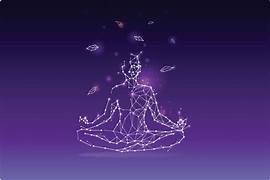
Often connected with physical poses and breathing techniques, yoga comes from a rich intellectual legacy. Deep insights from ancient books including the Yoga Sutras, Bhagavad Gita, Hatha Pradipika, Gheranda Samhita, Brahma Sutra, and Prasthanatrayi provide direction for current living and span across time.
Sutra in Yoga
A foundational book, the Yoga Sutras of Patanjali offers the eightfold road of yoga, sometimes referred to as Ashtanga Yoga. Ethical rules (Yamas and Niyamas), physical postures (Asanas), breath control (Pranayama), and meditation practices (Dhyana) comprise this road. Patanjali stresses the need for mental discipline and self-awareness; he teaches that real liberation results from mental mastery.
Bhagavad Gita
Included within the Indian epic Mahabharata, the Bhagavad Gita is a conversation between Prince Arjuna and Lord Krishna. This book looks at duty (Dharma), righteousness, and the ways of devotion (Bhakti Yoga), knowledge (Jnana Yoga), and selfless action (Karma Yoga). It helps people to fulfil their responsibilities free from connection to the results, so promoting a calm and balanced mind.
Pradipika Hatha and Gheranda Samhita
Key works in the Hatha Yoga tradition, which emphasizes physical exercises to get the body ready for higher realms of consciousness, include the Hatha Pradipika and Gheranda Samhita. These books go into great length on certain asanas, pranayama forms, and cleaning rituals (Shatkarmas). They highlight as the basis for spiritual development the need for physical health and vigour.
Prasthanatrayi and Brahmata Sutra
Together with the Upanishads and the Bhagavad Gita, the Brahma Sutra makes up the three main sources of Vedantic philosophy. The Brahma Sutra methodically clarifies the nature of reality (Brahman) and the personal interaction with the cosmos. It explores the idea of non-duality (Advaita) and implies that realizing the union of the self with the absolute marks the ultimate aim of life.
Contemporary Value
These old books provide ageless knowledge fit for modern living. While the Bhagavad Gita’s lessons on detachment and obligation offer a framework for negotiating the complexity of modern life, the ethical precepts of the Yoga Sutras encourage a harmonic and deliberate life. Essential in the hectic world of today, the Hatha Yoga books advance both physical and mental well-being. The Brahma Sutra’s Vedantic teachings inspire us to investigate more profound concerns about life and consciousness, therefore promoting inner serenity and contentment.
Basically, by combining physical, mental, and spiritual techniques, the philosophical books of yoga offer a whole orientation to life. Grounded in ageless wisdom, anyone can build a balanced, purposeful, and harmonic life by adopting these old lessons.
Rashmi Ghatge, Director, ParamYoga